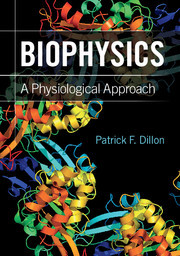Description
Biophysics
A Physiological Approach
Author: Dillon Patrick F.
This book explains the quantitative basis of human life to life science students, with examples drawn from contemporary physiology, genetics and nanobiology.
Language: English
Subject for Biophysics:
Approximative price 62.49 €
In Print (Delivery period: 14 days).
Add to cart
Biophysics: a physiological approach
Publication date: 01-2012
314 p. · 17.5x24.6 cm · Paperback
Publication date: 01-2012
314 p. · 17.5x24.6 cm · Paperback
Biophysics: a physiological approach
Publication date: 01-2012
314 p. · 17.9x25.2 cm · Hardback
Publication date: 01-2012
314 p. · 17.9x25.2 cm · Hardback
Description
/li>Contents
/li>Biography
/li>
Specifically tailored to life science students, this textbook explains quantitative aspects of human biophysics with examples drawn from contemporary physiology, genetics and nanobiology. It outlines important physical ideas, equations and examples at the heart of contemporary physiology, along with the organization necessary to understand that knowledge. The wide range of biophysical topics covered include energetics, bond formation and dissociation, diffusion and directed transport, muscle and connective tissue physics, fluid flow, membrane structure, electrical properties and transport, pharmacokinetics and system dynamics and stability. Enabling students to understand the uses of quantitation in modern biology, equations are presented in the context of their application, rather than derivation. They are each directed toward the understanding of a biological principle, with a particular emphasis on human biology. Supplementary resources, including a range of test questions, are available at www.cambridge.org/9781107001442.
Dedication; Acknowledgements; Introduction; 1. The energy around us; 2. Molecular contacts; 3. Diffusion and directed transport; 4. Energy production; 5. Force and movement; 6. Load bearing; 7. Fluid and air flow; 8. Biophysical interfaces: surface tension and membrane structural properties; 9. Membrane electrical properties; 10. Agonist activation and analysis; 11. Stability, complexity and non-linear systems; Concluding remarks; Index.
Patrick F. Dillon is Professor in the Department of Physiology at Michigan State University. He has taught physiology for more than 30 years, ranging from high school to medical school level. He was awarded the Outstanding Faculty Award from Michigan State University in recognition of his teaching achievements.
© 2024 LAVOISIER S.A.S.




